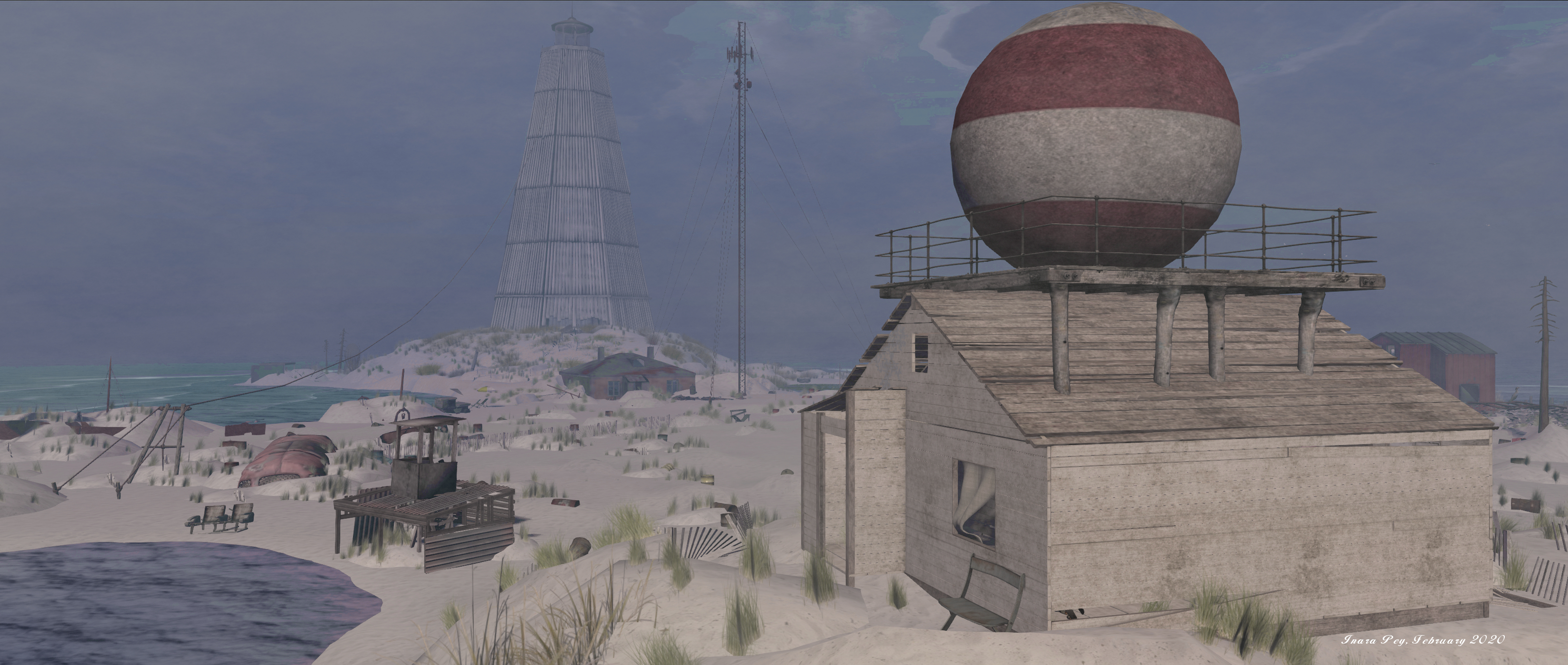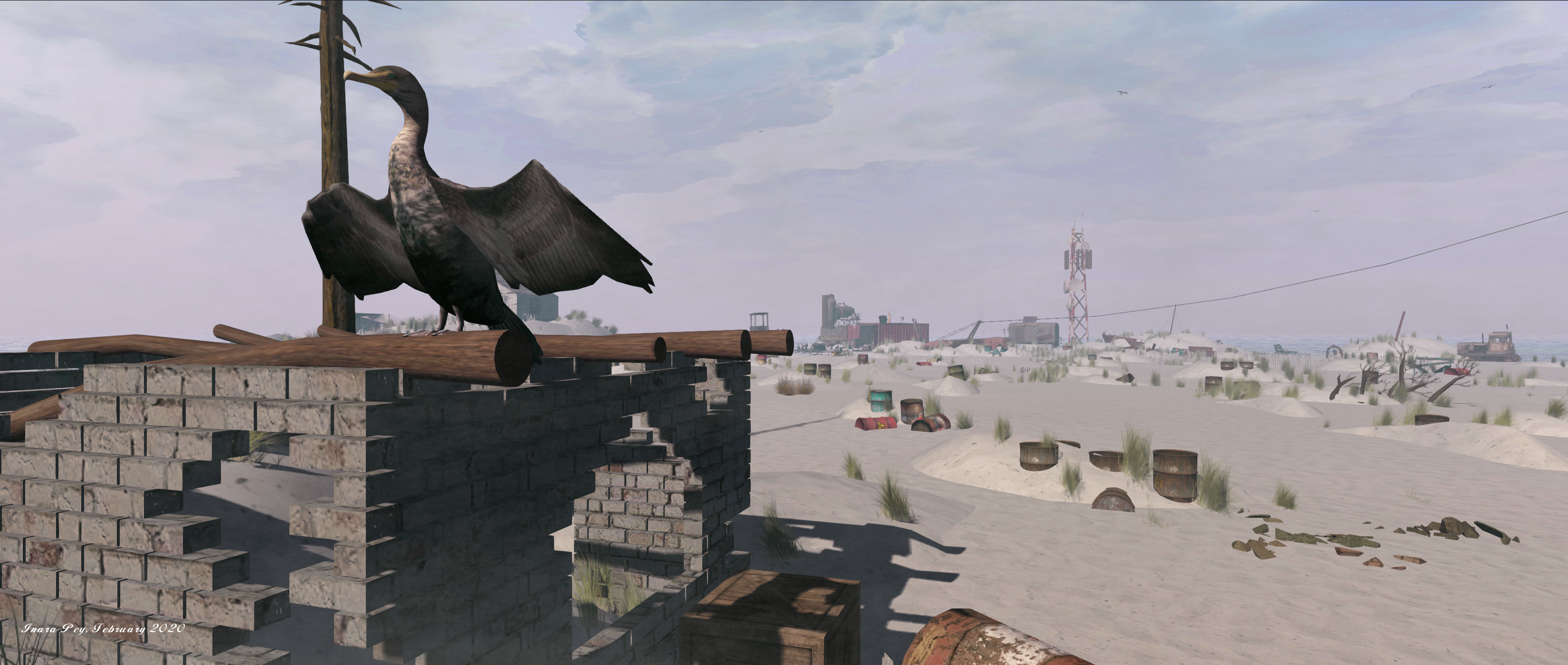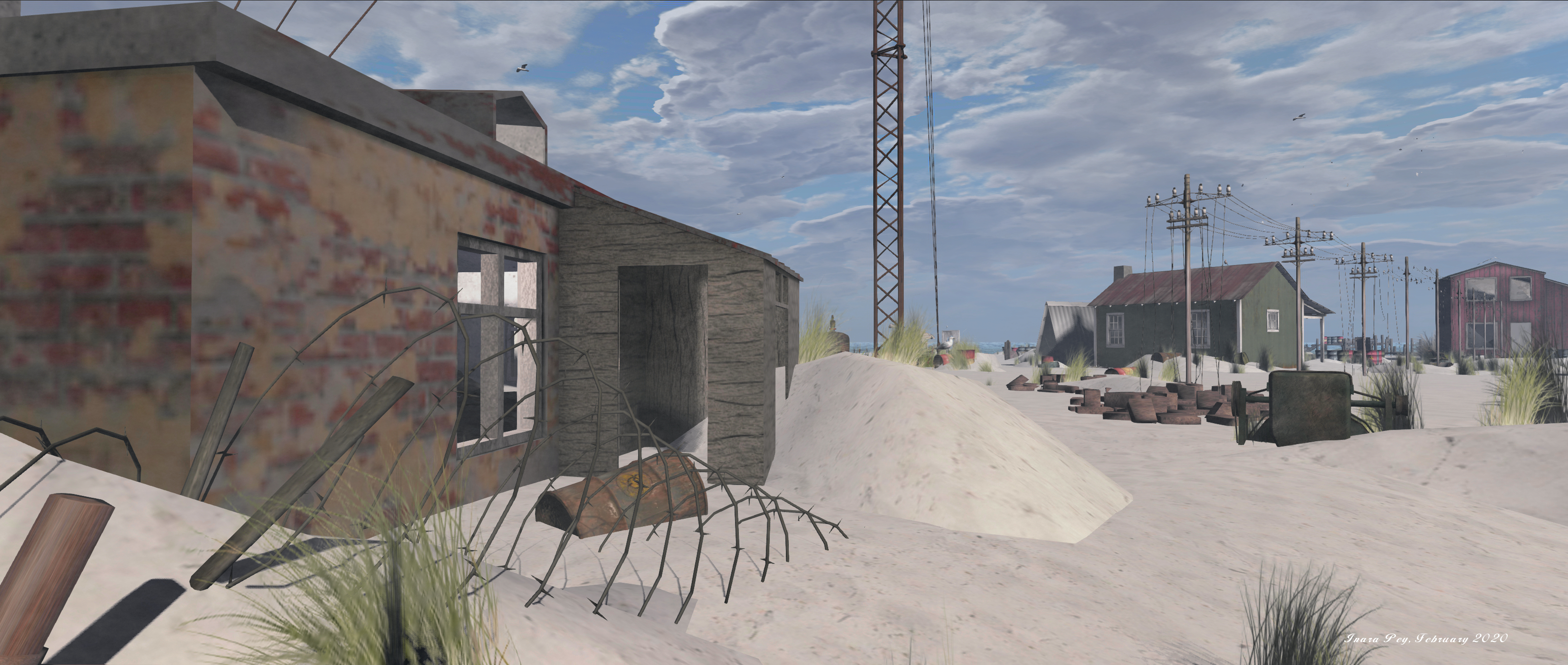
In late 2017, Serene Footman, bringer of some of the more captivating and unusual locations from around the globe, opened Khodovarikha, a Homeland region design inspired by a spit of land extending into the shallow waters of the Pechora Sea, now regarded as the south-eastern extent of what we call the Barents Sea off of Russia’s north coast, although it bore its name as far back as when the Barents was simply called the Murmanskoye Morye (“Sea of Murmansk”).
.
It’s a desolate, lonely place, marked by the wood-framed octagon of a lighthouse that once marked the Yugorsky Strait linking the Pechora and Kara Seas, once an important trade route and, during World War 2, the route taken by allied convoys bringing supplies and materiel to aid Stalin and his armies. Today, Khodovarikha is a largely forgotten place, most of its building falling into decline, a single, lonely weather station the only working centre. Its a place so remote, it isn’t even connected by road or rail to the rest of Russia.

I mention this because Serene’s interpretation of Khodovarikha is once again open in Second Life for a limited period, and brings with it a new blog post on the location and his inspiration for creating it. However, this is not a mere re-establishing of a past build; rather, Serene has taken the spirit of his original build, together with some of the notable elements – the lighthouse, the weather station, etc., – to offer a new interpretation of Khodovarikha and the life of its one permanent resident – Vyacheslav Korotki, or Slava as he is known.
As Serene notes in his 2017 blog post on the original build, it was Slava’s story that first drew him to wanting to represent Khodovarikha in Second Life. Now, in this iteration of the build, we see more of that life brought into focus: the distinctive lighthouse no longer functional (as it was in the original build), reflecting the fact its namesake ceased operations in 1996. Similarly, the damaged side panels apparent in the model and perhaps seen as storm or other damage with the original build, are now explained by Serene as being the result of Slava’s assaults on the wooden frame in order to provide him with the warmth of firewood during the harsh winters. A zipline also now extends down from the lighthouse, a tribute, Serene informs us, to the sports hall that once stood at the base of the structure.

Originally set within the cold harshness of winter, the region is this time offered in the summer months. This iteration brings new life to Khodovarikha: birds are very much in evidence, while with a few tweaks with the viewer’s windlight settings, it’s possible to render the setting under bluer skies as might be seen in the summer months, and which may well life Slava’s mood and thoughts. Certainly, a drop of sunshine adds warmth and light to Slava’s lonely, red-planked home.
The discovery of more photographs of the area have allows Serene to commission structures reflecting those to be seen in Khodovarikha – such as the brick-built but dilapidated bungalow sitting in the lee of the great lighthouse. This is reproduced within the region courtesy of Impossibleisnotfrench, who also produced the bothy in Serene’s last region design (see: Serene Footman’s Scottish vision in Second Life, December 2019).

As Serene notes, Khodovarikha does not have any natural beauty to it what would make it a subject for postcards, but in its deteriorating, lonely position, now all but bereft of human presence save for one man and the annual visits of the Mikhail Somov, it has a desolate, captivating beauty of its own. In bringing his vision of the location back to Second Life, Serene is allowing us to experience that isolated, decrepit beauty for ourselves, making a visit to the region – and a reading of both of Serene’s blog posts on it – an absolute must of Second Life travellers and explorers.
SLurl and Links
- Khodovarikha (Saint Denis, rated General)
- Khodovarikha blog post by Serene Footman, September 2017
- С возвращением, Слава, Serene Footman, February 2020
- Khodovarikha’s lonely beauty in Second Life – this blog, October 2017

